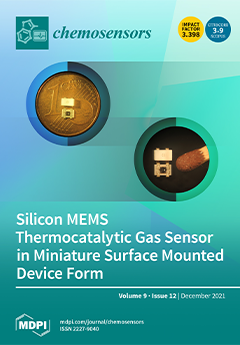The 6-oxonicotinate (6-Onic) salts of a one-dimensional cationic cobalt(II) or nickel(II) coordination polymers with 4,4′-bipyridine (4,4′-bpy), namely {[Co(4,4′-bpy)(H
2O)
4](6-Onic)
2·2H
2O}
n (
1) and {[Ni(4,4′-bpy)(H
2O)
4](6-Onic)
2·2H
2O}
n (
2
[...] Read more.
The 6-oxonicotinate (6-Onic) salts of a one-dimensional cationic cobalt(II) or nickel(II) coordination polymers with 4,4′-bipyridine (4,4′-bpy), namely {[Co(4,4′-bpy)(H
2O)
4](6-Onic)
2·2H
2O}
n (
1) and {[Ni(4,4′-bpy)(H
2O)
4](6-Onic)
2·2H
2O}
n (
2), were prepared hydrothermally by reactions of cobalt(II) nitrate hexahydrate or nickel(II) nitrate hexahydrate, respectively, 6-hydroxynicotinic acid and 4,4′-bipyridine in a mixture of ethanol and water. In the hydrogen-bonded frameworks of
1 and
2, the one-dimensional polymeric chains of {[M(4,4′-bpy)(H
2O)
4]
2+}
n (M = Co, Ni), the 6-oxonicotinate anions and the lattice water molecules were assembled via strong intermolecular O–H···O and N–H···O hydrogen bonds and
π–
π interactions, leading to the formation of the representative hydrogen-bond ring motifs: trimeric
R23(10) motif, the centrosymmetric tetrameric
R24(8) and
R24(12) motifs and the pentameric
R45(12) motif. The isostructural coordination polymers
1 and
2 exhibited a different electrochemical behavior, as observed by cyclic voltammetry, which can be attributed to the nature of the metal ions (cobalt(II) vs. nickel(II)).
Full article





